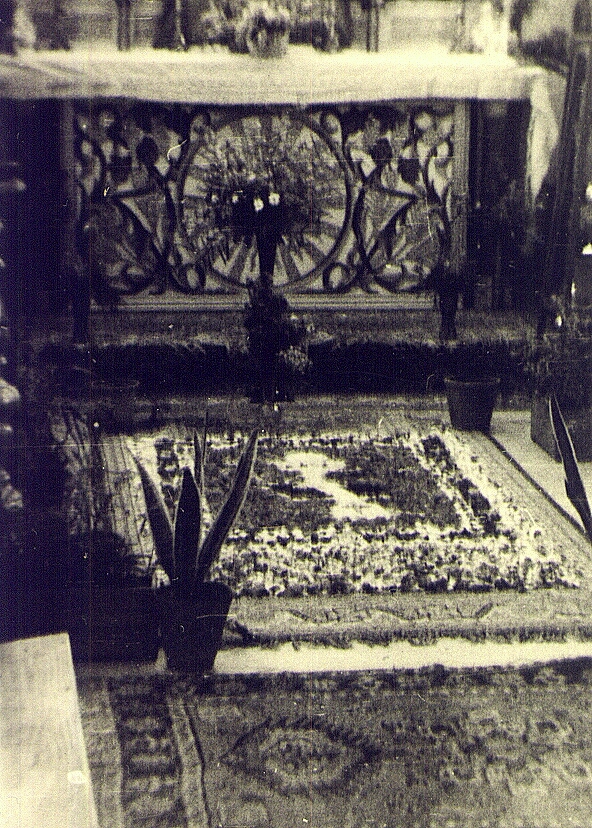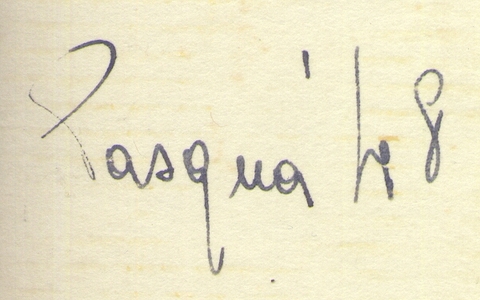A Carpet of Flowers Posted by Serena on Jun 11, 2015 in Uncategorized
By Serena with an English translation by Geoff
Domenica scorsa era la festa del Corpus Domini, e in molti paesi e città italiane c’è la tradizione di celebrare questa solennità con una ‘infiorata’. ‘Infiorata’ viene dalla parola ‘fiore’ e consiste nel creare dei quadri religiosi usando i petali colorati dei fiori raccolti il giorno prima o la domenica mattina all’alba. In molti posti questo tappeto di fiori viene creato sul pavimento all’interno della chiesa, davanti all’altare maggiore, ma in alcune città l’intera strada davanti al duomo viene decorata con tutta una serie di quadri fioriti a soggetto religioso.
Last Sunday was the festival of Corpus Domini, and in many Italian villages and towns it’s traditional to celebrate this solemnity with an ‘infiorata‘. ‘Infiorata’ comes from the word ‘fiore‘ (flower) and consists of creating religious pictures using flowers collected the previous day or Sunday morning at dawn. In many places, this carpet of flowers is created on the floor inside the church, in front of the main altar, but in some towns the entire street in front of the cathedral is decorated with a whole series of flowery pictures on religious themes.
Lunedì mattina mio padre stava leggendo sulla rivista Famiglia Cristiana un articolo su alcune di queste più spettacolari infiorate, come quella famosissima di Spello in Umbria, quando si è ricordato che anche lui da giovane aveva ‘dipinto’ un quadro di fiori per la sua chiesa. Al che mi sono ricordata di avere una foto (purtroppo in bianco e nero e formato francobollo) di questo tappeto di fiori, così sono andata a prenderla e gli ho chiesto di descrivermelo.
On Monday morning my father was reading an article in his Familia Cristiana magazine about some of the more spectacular ‘infiorate’, such as the very famous one at Spello in Umbria, when he remembered that he had also ‘painted’ a picture of flowers for his church when he was young. That reminded me that I had a photo (unfortunately in black and white and the size of a postage stamp) of this carpet of flowers, so I went to get it and I asked him to describe it to me.
“Quell’anno c’erano molti fiori nel giardino del prete, sarà stato il 1948,” ha cominciato a raccontare mio padre, “così ho chiesto al prete se potevo usarli per fare il tappeto per il Corpus Domini. Ho scelto la classica immagine del calice con l’ostia. Ho fatto il calice in giallo e l’ostia in bianco usando i petali delle margherite. Lo sfondo era rosso, fatto coi papaveri, e poi la cornice intorno era tutta colorata, ma non mi ricordo più che fiori ho usato”, si è scusato papà, che adesso ha 94 anni!
“That year there were lots of flowers in the priest’s garden, it must have been 1948,” my father began to tell me, “so I asked the priest if I could use them to make the carpet for Corpus Domini. I chose the classic image of the chalice with the holy bread. I did the chalice in yellow and the holy bread in white using daisy petals. The background was red, made with poppies, and then the frame around it was multi coloured, but I don’t remember which flowers I used any more”, my father, who is now 94, excused himself!
“La suora cuciniera era così contenta, che mi ha preparato lo zabaglione: ‘Mangia Nicolino, che ti fa bene’, mi ha detto. Mi chiamava Nicolino perché mi conosceva da quando ero bambino, anche se allora, quando ho fatto il tappeto di fiori, avevo già fatto la guerra e la prigionia” (N.B.: La campagna d’Africa con l’esercito italiano durante la Seconda Guerra Mondiale e 3 anni di prigionia in Tunisia sotto i Francesi!)
“The nun who did the cooking was so pleased that she made me some zabaglione: ‘Eat Nicolino, it’s good for you’, she said to me. She called me Nicolino because she had known me since I was a child, even if at that time, when I made the carpet of flowers, I’d already been to war and been a prisoner of war”. (N.B.: The African campaign with the Italian Army during World War 2 and 3 years as a prisoner of the French in Tunisia!)
This Wikipedia page about the Infiorata di Genzano has some great photos showing the creation of a massive carpet of flowers.

Build vocabulary, practice pronunciation, and more with Transparent Language Online. Available anytime, anywhere, on any device.







Comments:
Joseph T. Madawela:
Beautiful feast and now I need to work on my vocabulary!